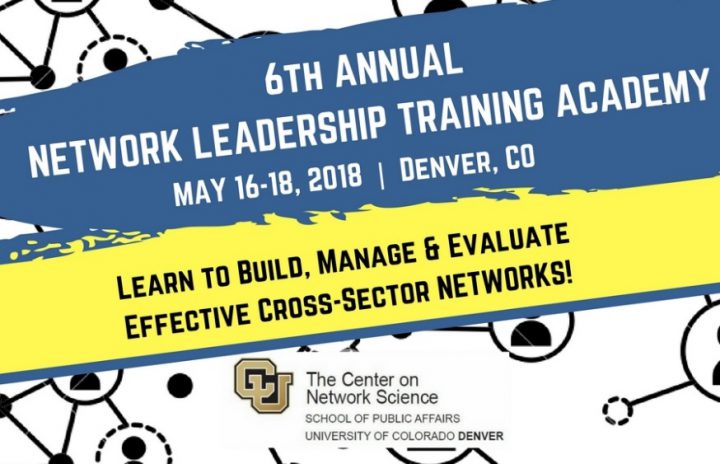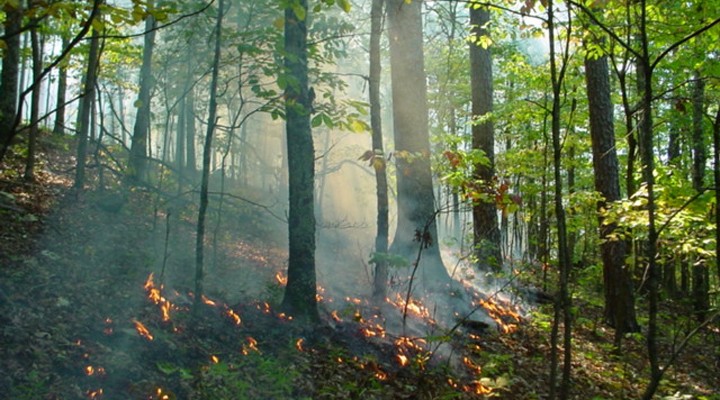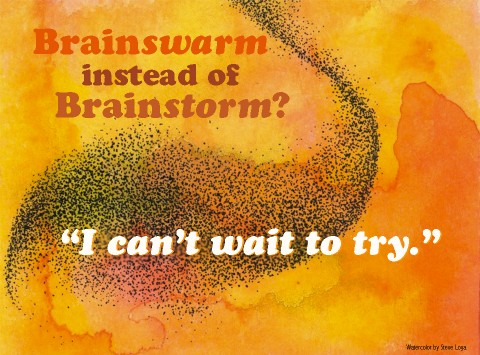Tag Archive: Interaction Institute for Social Change
May 22, 2018
Connection is a social determinant of health.

Last week I participated in the Network Leadership Training Academy hosted by the University of Colorado at Denver’s Center on Network Science. It was wonderful to meet fellow network geeks and enthusiasts from around the country and Canada and to hear about diverse applications of network theory and practice, from public health to public transportation, from early childhood education to after-school programming, from housing to firefighting.
I was invited to share some of what we at the Interaction Institute for Social Change are learning as we work at the intersection of networks and equity, which included telling the evolving story of Food Solutions New England. There seemed to be resonance with and appetite for going deeper to unpack how networks can be forces for truly equitable liberation from dysfunctional and damaging systems.
And there were many other presenters over the course of the couple of days I was able to attend. Here are some of my take-aways.
- In networks, less is often more with respect to personal connections. Given that people can only manage a certain number of social connections, a good question to ask is “How can we cultivate and maintain the fewest number of connections that are valuable?”
- Closed networks do not lend themselves to novelty. For innovation (and presumably for both resilience and adaptability) it is important to pay attention to “structural holes” in networks.
- Effective engagement rests on authentic listening, informal exchanges and meetings (lunch, coffee), identifying and honoring strengths and assets, thinking of people as people and not projects, constantly showing up and closing loops.
- In order to activate a network you have to have established sufficient trust and reciprocity.
- Effective networks for individual “leaders” are open (distributed), diverse and deep.
From conversation and reflection with participants:
- Connection is a social determinant of health.
- Increasingly healing needs to be viewed as a foundational goal of developing networks.
- Effective networks for individuals are not necessarily effective networks for collectives and social change. We have to be clear about what our scale and intentions are. (ON this front, check out this wonderful post by Christine Capra – “Networking Does Not Equal Network WEAVING“)
Additional resources to consult:
- The Partner Tool, a social network analysis tool designed to measure and monitor collaboration among people/organizations.
- Person-Centered Network App, for use by a provider to first screen a person to assess their gaps and strengths in their personal support systems and then, based on the results, link them to available community resources.
April 18, 2018
“Network entrepreneurs are keenly aware that they are few among many working across the larger system, and in this way they embody a special type of … leader[ship].

Image by tarotastic, shared under provisions of Creative Commons Attribution License 2.0.
This is the third in a series of blog posts that appear in their entirety on the Education Week website. In the previous post we considered how structure has implications for the extent to which a network or networked activity is able to leverage different kinds of net effects and create value for diverse participants. We also considered how structure has implications for both equity and how power is distributed. Another important consideration in how to create equitable benefit is what leadership looks like and how it plays out in and around networked activity.
The concept of leadership seems to be undergoing a rapid evolution lately. Especially in this “network age” there appears to be both a growing appreciation that leadership has always been about more than the singular and highly visible heroic individual, and that going forward, leadership must be upheld as much more of a shared and multi-dimensional endeavor.
“Leadership for this era is not a role or a set of traits; it is a zone of inter-relational process. Step in, step out.”
In much of the collaborative consulting work that we do through the Interaction Institute for Social Change, leadership (or what we at IISC often call Facilitative Leadership) is about “holding the whole.” That is, there is a need for groups, teams, organizations and communities to think more expansively about the state of a given complex system (community, economy, food system, organization, school, school district) and pay attention to what is required to support resiliency and/or change for more equitable and sustained benefit. In these situations, the traditional top-down images of leadership fall short.
In education, for example, we have seen hopes often pinned on seemingly superhuman teachers and principals who are brought in to “rescue failing kids and schools.” The assumption underlying such moves is that these extraordinary individuals will of their own drive and volition beat the odds and dramatically reverse the downward trajectory. This story may be the making of a box office smash, but in reality is met with mixed results at best. This is not to say that individuals cannot provide crucial sparks at important moments in organizations and communities. But holding out for heroic singular leadership ignores the systemic reality of what got us to where we are in the first place, and denies the more complex and connected response that is actually required.
“Leadership is helping to make the network smarter.”
Harold Jarche
Indications are that network leadership is at its best a dynamic, diverse, and multi-dimensional phenomenon. Many of those with whom IISC partners in the work of social and systems change understand this implicitly, and we have found it important to help them externalize and be more explicit about this by naming some of the roles that leadership can embody in a collaborative/networked world. Read More
March 15, 2016

I’ve had the pleasure of supporting some important work happening through The Nature Conservancy’s Fire Adapted Communities Learning Network. According to the FAC website, a fire adapted community “acknowledges and takes responsibility for its wildfire risk, and implements appropriate actions at all levels.” Actions in these fire-threatened communities “address resident safety, homes, neighborhoods, businesses and infrastructure, forests, parks, open spaces and other community assets.” In addition, the point is made that every community is unique in terms of circumstance and capacities, so that local action may look different from place to place.
While there may be differences from community to community in the FAC network, it is also united by a common belief that there is need for more of the right kinds of fire that support the regenerative capacity of ecosystems. As I’ve learned from members of these communities, “cool fires” can be used to help build resilience into forests, feeding and encouraging new growth and diversity. This is actually a practice that goes back a long ways in indigenous communities, which used “prescribed burns” to support the long-term health of the forested landscape, to enrich soil, clear pathways for fauna and support biodiversity, which supported the health of their own communities. However, many of these practices were outlawed and the result of the newer management practices was a drop in health of the forests and a rise in vulnerability of those living in or near them. As one person in the network recently put it, they are now trying to “reclaim” fire and “give fire back to people.” Read More
April 1, 2014

The recent barrage against the effectiveness of brainstorming has been a bit hard for those of us who are grounded in the Interaction Method. But evidence matters, doesn’t it? I know that Curtis has talked about the limits of brainstorming a couple of times in this blog. Read More
March 31, 2014

This post continues a conversation that Curtis Ogden started last week. (Process is Where Change Happens) It’s a conversation we’ve been having for years at IISC. On one hand, we recognize the importance of understand how thinking shapes the systems we produce and reproduce. And it’s important to understand that inequities and oppression are not just a matter of thinking that can be changed simply by changing our minds. I’ve often been impatient with the “change your thinking, change the world” discourse because I’ve seen it used as an excuse for avoiding discussing the systems dynamics and the resulting inequities they produce. Still, I think there are a few ways in which focusing on the change “in here” can provide power for changing conditions “out there.”
Read More
March 25, 2014

This post is a response to yesterday’s post by Cynthia Silva Parker.
I was truly moved by Cynthia’s heartfelt exploration of anger and its role in our quest for justice. I get angry. I get angry in some healthy ways, and in many unhealthy ways.
Read More
March 14, 2014

Last week Darren Walker opened the Resilient Cities lunch reminding us that not only do we need to work to make cities resilient and sustainable, we must also work to make them just. As I listened to Xav Briggs, Joan Clos, Toni Griffin and others speak, I thought about my work at MIT’s Department of Urban Studies and Planning and what working to make just cities means for planning and planners. How does one attend to the myriad issues facing cities: poverty, crumbling infrastructure, environmental sustainability and economic collapse? Read More
March 4, 2014

I’m just getting back from a four-week sabbatical, a special gift from IISC after seven years of service. I grew in leaps and bounds. A lot of what been brewing inside of me for the last year or two started to come together in a powerful way. My time off was anchored by a week-long, life changing, couples’ retreat in Mexico.
Read More
March 3, 2014

Four compelling questions came to me via the monthly newsletter of Conditioning Leaders, led by our colleague Madeline McNeely. She’s reflecting on 20 years of work and asking herself some great questions that we should all be asking ourselves as our year gets into full swing:
Read More
February 24, 2014

Enjoy these simple and powerful guidelines from Beth Kanter about how movement makes meetings and workshops more productive. This is great advice for getting beyond designing for “brains on sticks” as my colleague Curtis Ogden likes to say.
As a trainer and facilitator who works with nonprofit organizations and staffers, you have to be obsessed with learning theory to design and deliver effective instruction, have productive meetings, or embark on your own self-directed learning path. Learning theory is an attempt to describe how people learn. There are many learning theories and can be categorized in different ways:
Read More
February 18, 2014

8/14/14 Update: Sadly the list of names in this post has grown in the past week with the deaths of Eric Barnes and Mike Brown. In both cases it appears that aggressive policing of minor offenses escalated, resulting in deaths that did not need to happen. #blacklivesmatter
I find the fact that we need a conversation called #BlackLivesMatter disturbing. But it’s a badly needed conversation and one that needs to catalyze effective action. It’s urgent that we create a context where it’s no longer “understandable” that someone could be afraid enough of an unarmed black person to justify killing him or her.
Read More
February 3, 2014

The following post has been written by Royve Holladay at The Adaptive Action. We hope you enjoy it as much as we did!
Can three questions really change the world? Well, maybe. Let’s think about it for a minute. One thing we know about schools is that nothing stays the same for long. Each year brings the latest “best practice.” Each week brings a new procedure and its paperwork. Each day, our students pose new challenges. Each hour, the media bombards us with news about the latest crisis. What might possibly help us keep our balance as the world shifts beneath us?
Read More












